
It’s life, but not as we know it. Sea angels, sea butterflies and jolly jelly fish glimmer in vivid colors all around us, even though we can see right through them.
The ultimate experience on a momentous expedition across Canada’s famed Northwest Passage aboard Seabourn Venture is the unique opportunity to dive into unexplored icy water in a custom built mini-submarine.
The Seabourn Cruises expedition team describe a dive in a submersible as like taking a trip into space, but a space that’s unbelievably teeming with life. And here at the top of the world, it’s guaranteed that you will be the first human ever to see the sights on the remote sea floors off the coasts of Arctic islands that are the realm of polar bears, musk ox and sea birds.
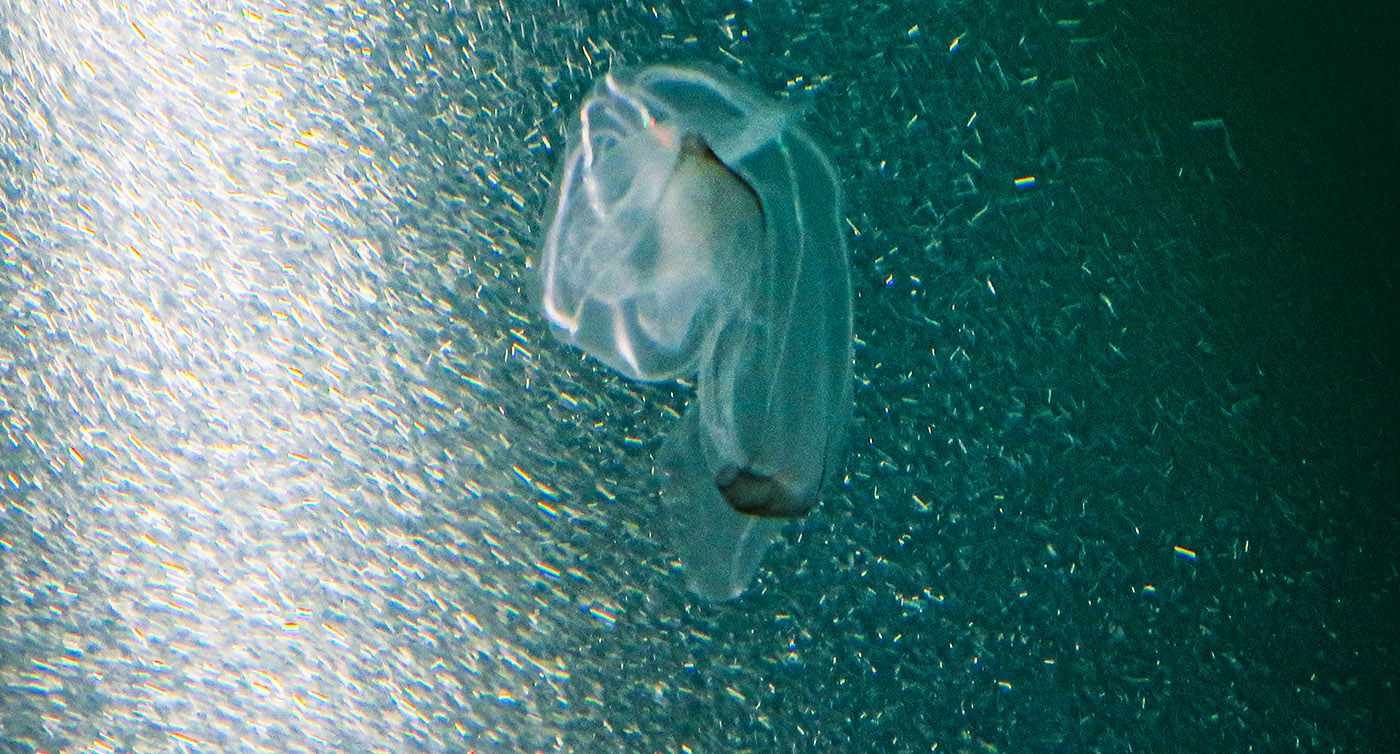
I’ve had the experience of doing scientific dives in the past in tiny unheated research submersibles that were so cramped that I had to lie flat and peek out a tiny porthole. By contrast, Seabourn’s battery powered U-Boat Worx Cruise Sub 7 is as accommodating, luxurious and climate controlled as a Rolls-Royce, with comfortable leather seats, and wrap-around acrylic bubble windows that provide unobstructed panoramic views in all directions.
My dive happened near the beginning of a three-week Northwest Passage exploration cruise by Seabourn Venture and the scene couldn’t be more magical. The sub was lowered from the ship into the water off Philipots Island in Nunavut, a place that’s a full 3,500 km (nearly 2,200 miles) due north of Toronto in Baffin Bay. We’re near Devon Island, whose tongues of glacial ice that flow between soaring mountain peaks inspired artists from Canada’s famous Group of Seven.
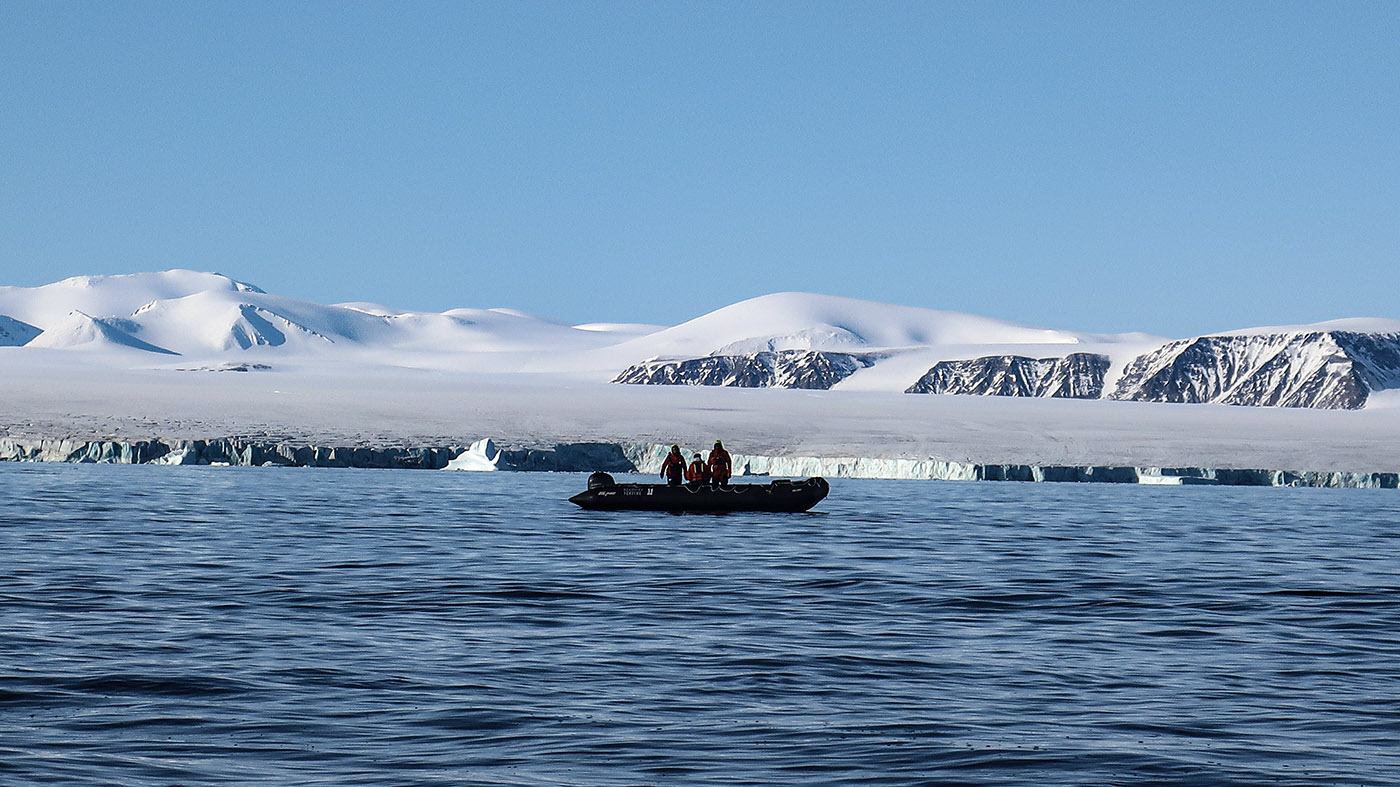
Each environmentally friendly, battery-powered sub carries just seven people — six guests, three each in two clear acrylic spheres — plus the highly trained pilot at the controls. The intimate and innovative exploration vehicles are capable of diving to depths of 300 meters (nearly 1,000 feet) offering passengers awe-inspiring perspectives of the marine world all around.
Before each dive there’s a safety briefing, and the first thing people ask is: how do we know this dive is safe? Well, unlike an infamous experimental submersible that met an unfortunate fate, this U-Boat Worx sub is part of a thoroughly tested and certified series of commercial submersibles that has a faultless safety record in use around the world.
The two submersibles on Seabourn Venture cost $4-million each and are thoroughly checked and maintained between each dive and re-certified regularly. Each has eight thrusters — six around the sides and two on the top, powered by 260-volt batteries—that allow precise movement in any direction. The propeller-like thrusters are all we need to dive and maneuver. Systems keep pressure and temperature at surface levels at all times.
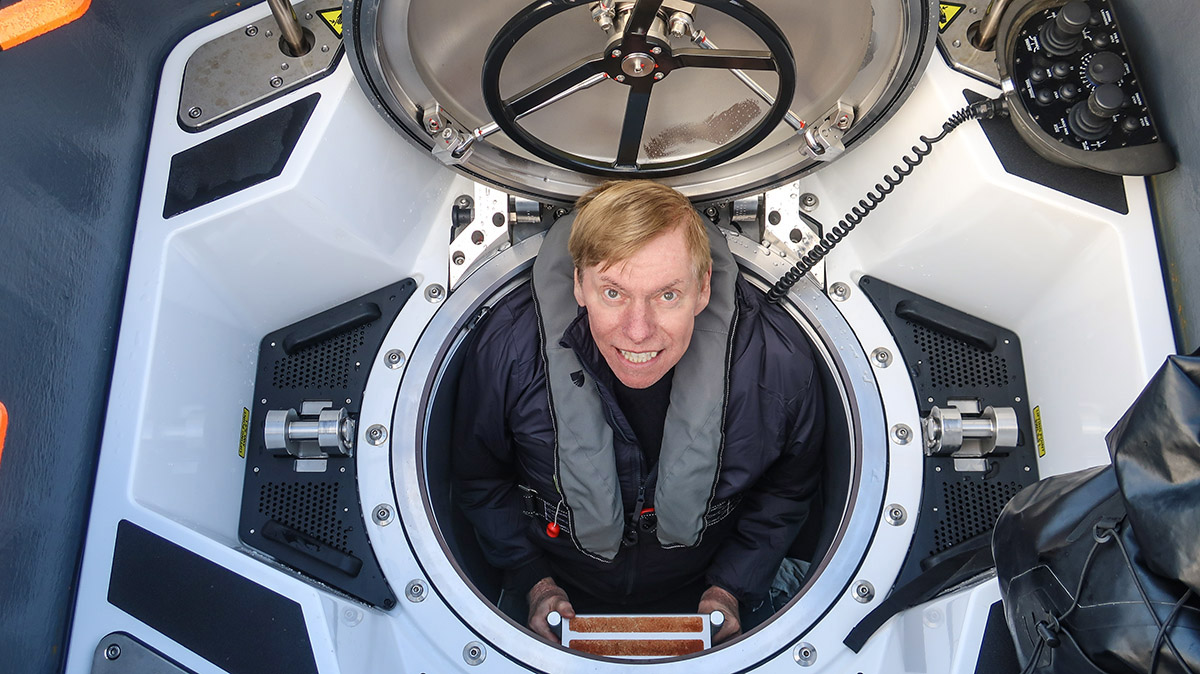
Before we head out there’s a weigh-in to make sure that we balance the submersible’s load so it can hover easily in the water. And because the hatch is narrow, we must be able to fit inside a hula hoop-like ring in the Expedition Lounge.
Dressing for the event is different than going out on other expeditions. where guests wear Seabourn’s complementary orange Helly Hansen waterproof parkas. Light colors reflect on the wraparound windows so we’re instructed to wear dark colors, and the separate inner insulating jackets of the parkas prove to be just the right shade. Shoes are also better than boots, as we have to cover them with special soft booties before boarding to keep from scratching the wraparound acrylic dome or finishes inside the sub.
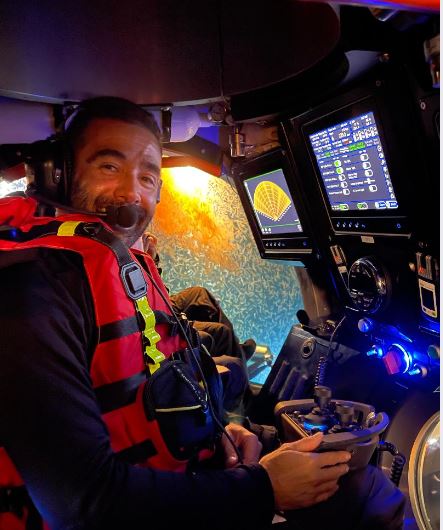
Our pilot on this mission is Isaac Yebra, who started his career as a commercial airline pilot and is still a flight instructor. He says the instruments on the U-Boat Worx subs are very similar to those on the Airbus-320s he flew. But the movement of a sub is actually much more precise than a plane to control and the thrusters can raise and lower or let the sub hover in place and even spin it 360 degrees. The system with joy sticks and buttons for maneuvering may look like a high-tech version of a game controller, but it’s military grade.
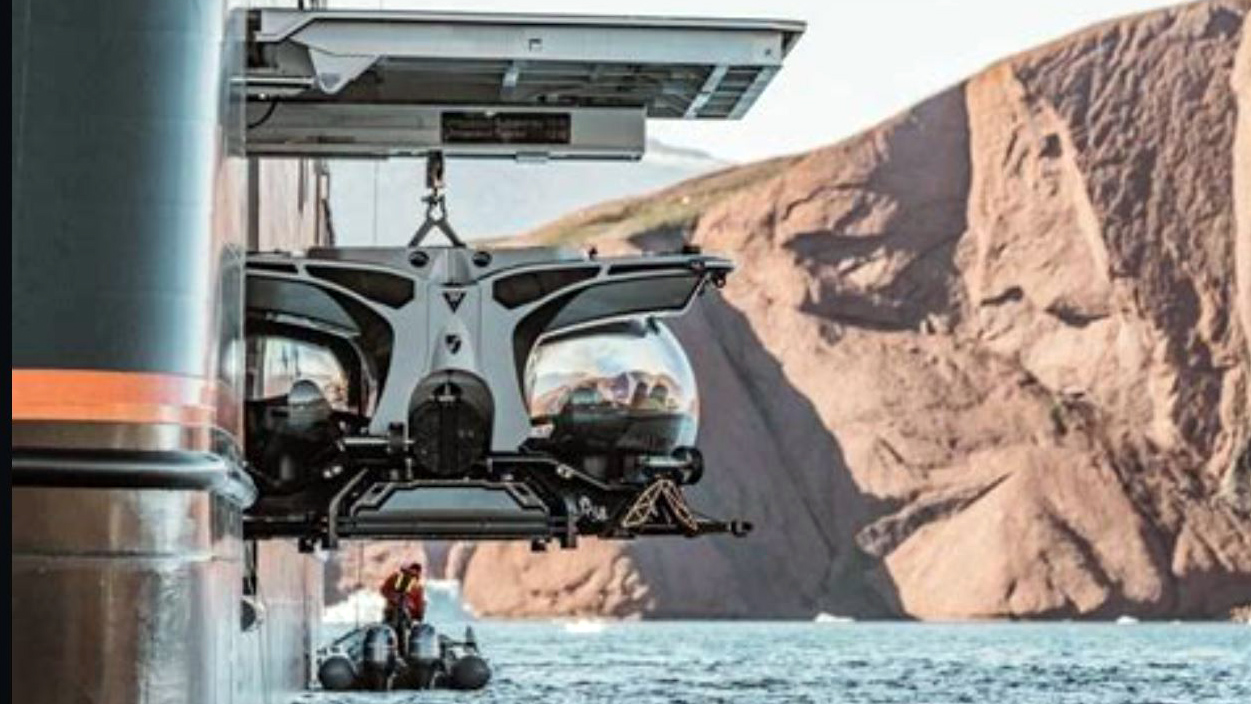
The six passengers for the dive ride on an inflatable boat from the ship to the sub and climb aboard. Descending three steps through a hatch at the top, we settle in to the swiveling seats around the outside of the sub’s acrylic dome. Then, it’s Isaac’s turn to board and batten down the hatch. The water temperature is actually below freezing but it’s warm and cozy inside.
The dive begins, as with an air flight, with a run through a check list and relaying all the gauge readings to the chase boat on the surface. The pilot also has to communicate all the instrument readings at 15-minute intervals throughout the dive to the surface boat. If something were to happen to the pilot, a fail-safe system would kick in and bring the sub back to the surface automatically.
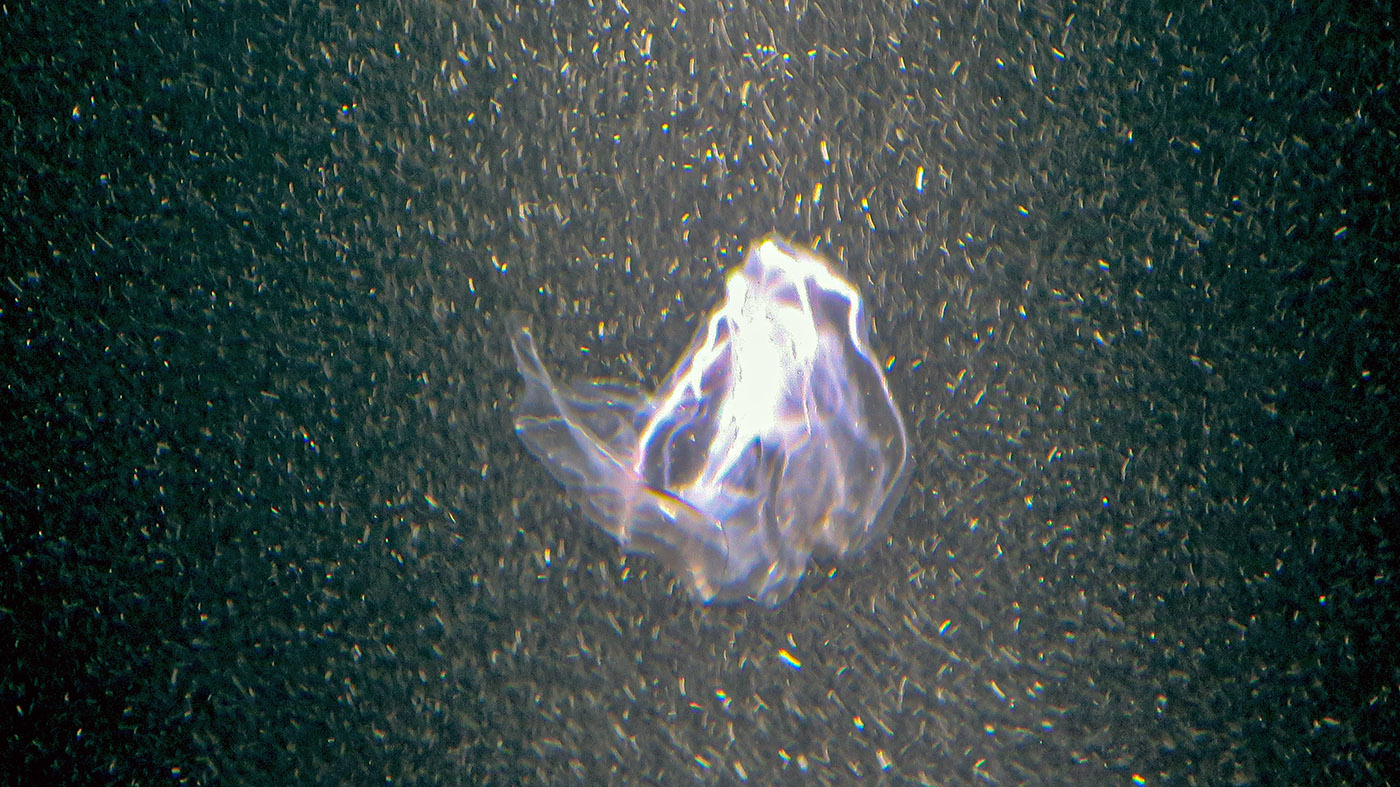
The excitement builds as we descend and sunlight gets increasingly scarce. By the time we’ve reached about 200 feet—much deeper than scuba divers typically ever go–it’s inky black outside, but the LED lights illuminate the scene ahead. Passing by the windows are jellyfish including one of the largest species found here, Chrysaora menanster, which lives its whole life under the Arctic ice and whose tentacles can stretch to more than nine feet long.
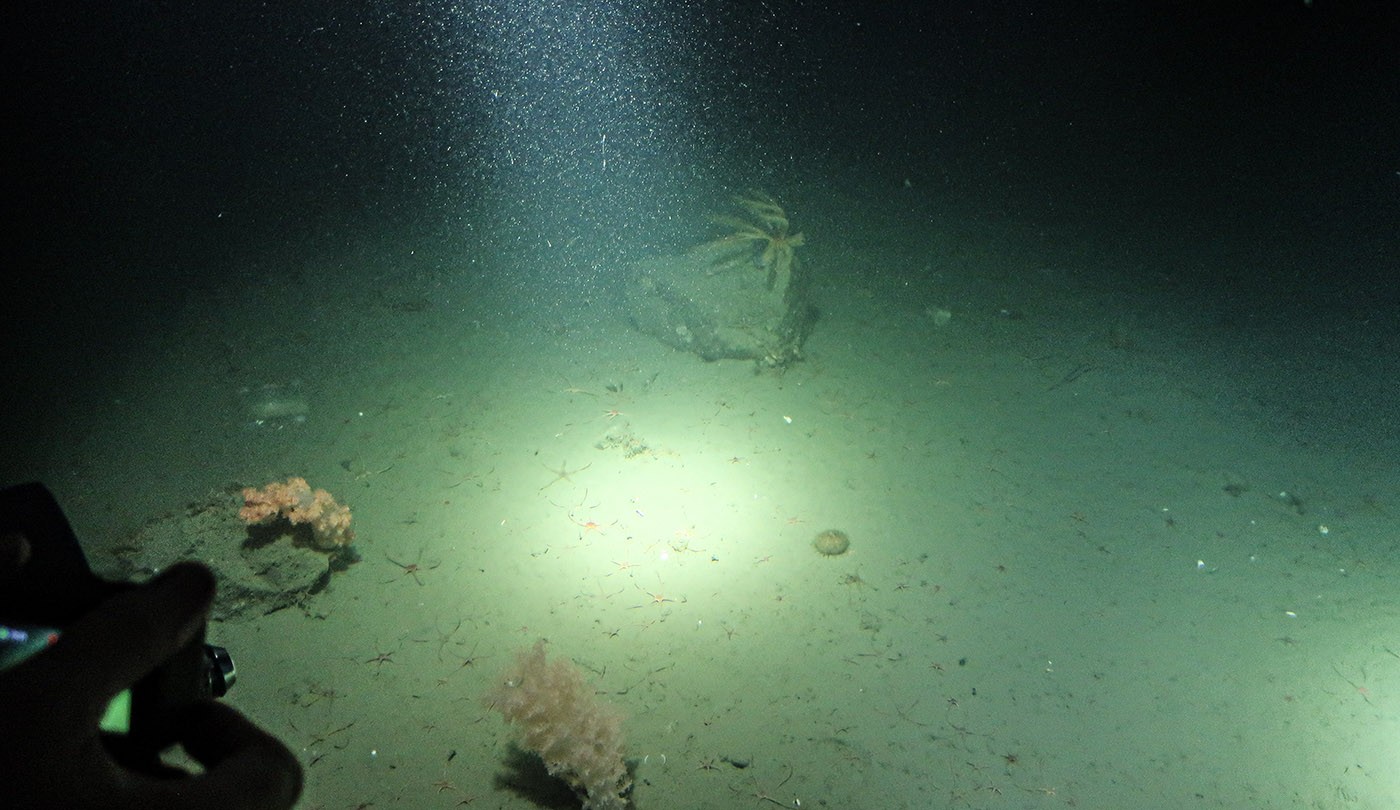
Approaching the bottom, beneath almost 600 feet of water, there are starfish and soft corals thriving that have never seen the sun. Sonar helps us avoid any rocks as we hover just a few feet above the silty sea floor.
Considering how clear the Arctic water appears when we make landings on the rocky shores, the water is remarkably filled with a menagerie of creatures, and the deeper you get the more incredible they become. Many of them seem virtually transparent until they swim into view.
A snow of phytoplankton surrounds us, marine organisms that are feasted on by tiny, shrimp-like animals called krill that in turn become the food for seabirds, seals, whales, and other Arctic Ocean animals.
Then there are otherworldly Pteropods who swim using wing-like flaps extending from their jelly-like bodies. Transparent sea angels may look innocent, but they’re predators, seeking out winged snails officially known as shelled pteropods but more commonly called sea butterflies. When the LED lights of the submarine illuminates them, it creates a rainbow of hues as the light is reflected from different features inside their bodies.
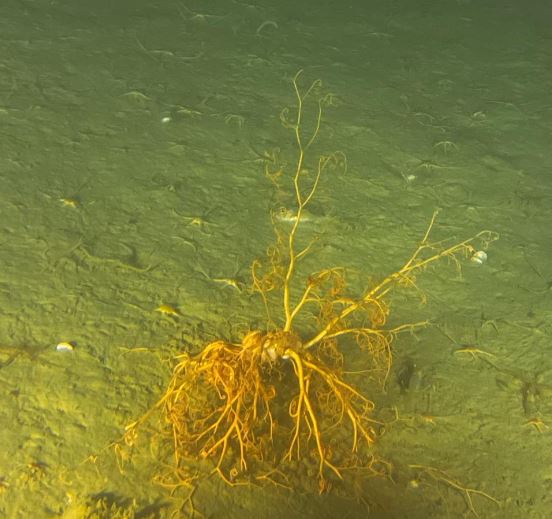
One of the stranger denizens of the deeps here is one Isaac calls a sea bat. It’s a fingernail-sized round black sea snail that hovers outside the sub’s dome using what look like pointed bat wings.
For a grand finale, Isaac turns off the lights and as he rotates the sub, the bio-luminescent creatures all around become an awe-inspiring light show.
We’re fascinated by the variety and the swarms of life attracted by our visit. As it’s time to resurface after about 45 minutes at the bottom, there’s a collective sigh that we can’t linger a little longer. The slow ascent to the surface ends with a splash of turquoise water sparkling in brilliant sunlight and we again board a Zodiac boat for a return to Seabourn Venture.
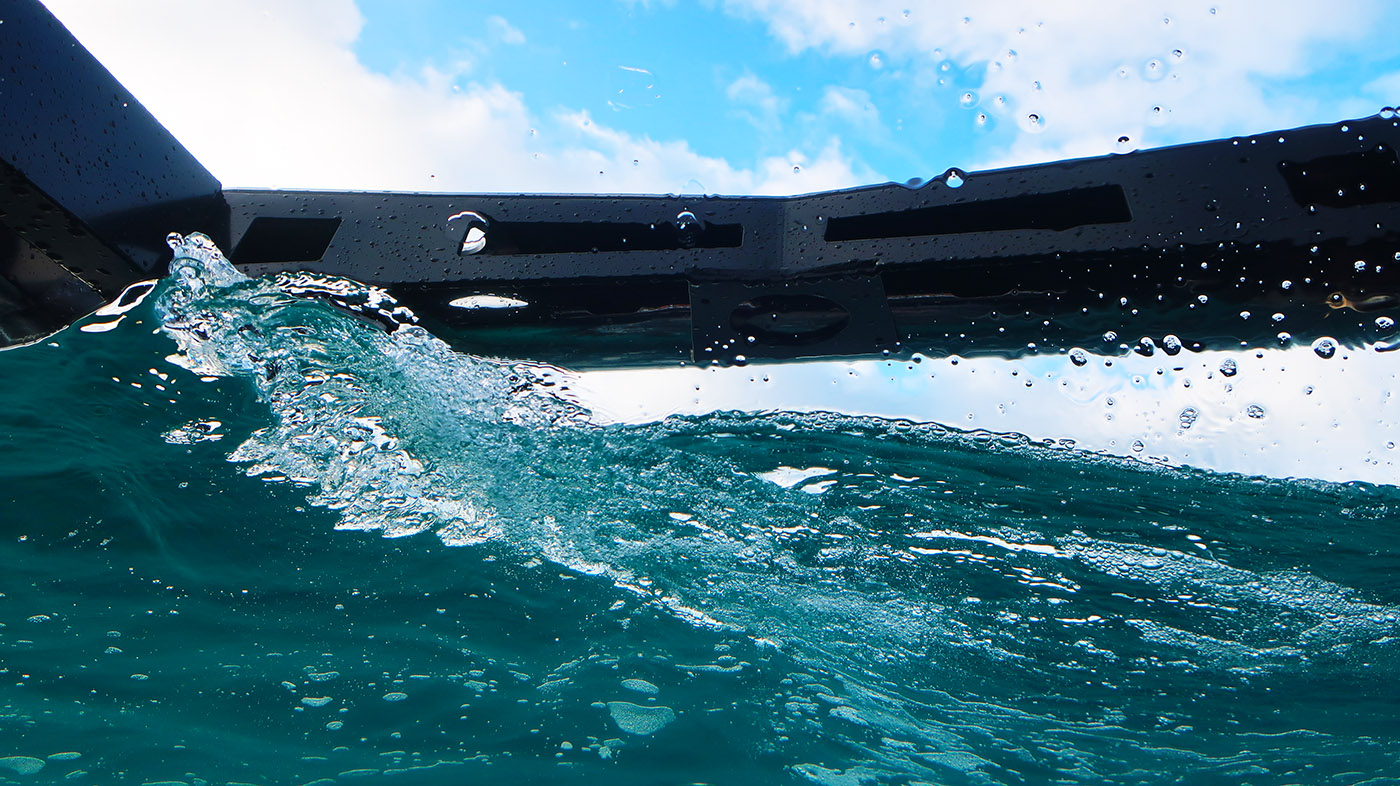
When we get back on the ship, a couple who were on the dive rushed from the loading platform to the expedition desk to find out whether any of the spaces on future dives are still available for another experience down under.
The slots do sell out quickly and unfortunately on some days of the cruise, dives must be cancelled due to heavy ice or rough water, so it’s a good idea to sign up early because dives later in a cruise end up with wait lists.
Seabourn Venture and sister expedition ship Seabourn Pursuit both offer these submersible dives on their world-wide itineraries. The cost is $900 a passenger for about 45 minutes under the waves but each dive is planned as a unique experience to a place no one has ever seen before. And you’ll come back with memories to share for years to come.
Both Seabourn Venture and Seabourn Pursuit are planning crossings of the Northwest Passage in the summer of 2025. Seabourn Venture will visit Canada’s eastern Arctic in 2024. Information is available at www.seabourn.com
Story by Wallace Immen, Executive Editor The Cruisington Times

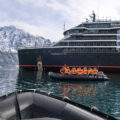


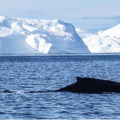

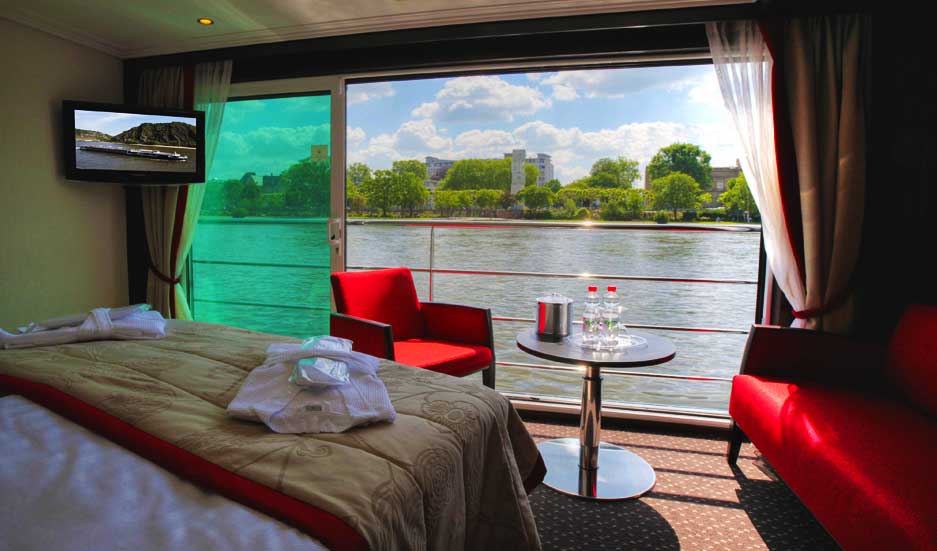
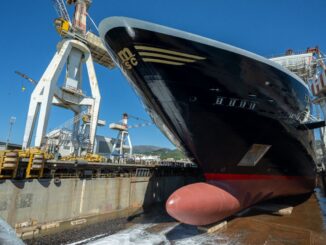

1 Trackback / Pingback
Comments are closed.